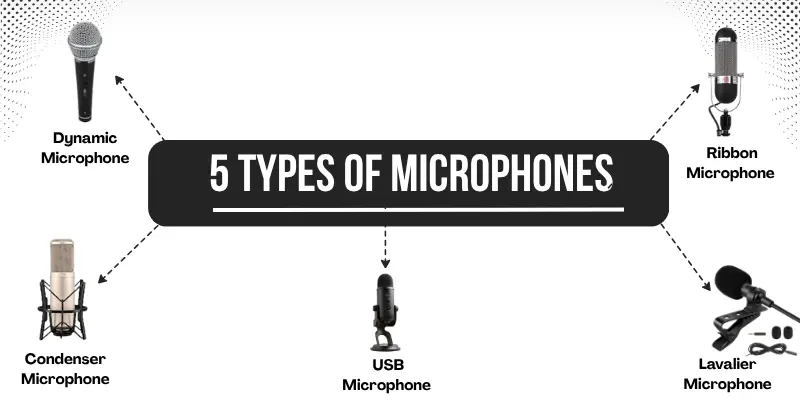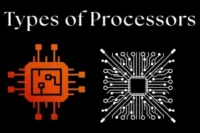Exploring Different Types of Microphones
Published: 4 Aug 2025
Microphones are essential tools for recording, transmitting, and communicating. Whether you’re a musician, podcaster, gamer, or content creator, selecting the correct microphone can significantly improve your audio quality and overall production value. But audio isn’t the only factor that impacts your performance — your choice of other computer accessories also matters.
For instance, knowing the types of keyboards can help you create a comfortable and efficient workspace that complements your microphone setup. In this article, we will look at several types of microphones, how they work, and the common mistakes people make when buying one, so you can make the right choice for your needs.
What is a Microphone?
A microphone is an audio device that picks up sound waves and converts them into electrical signals. These signals are eventually processed and amplified for a variety of purposes, including recording, broadcasting, and live performances. Microphones exist in a variety of designs, with every type suited for a certain function and setting. (If you want to learn more, check out our detailed guide on the pros and cons of different types of microphones to help you make the right choice.)

Types of Microphones
Microphones come in various types, each designed for specific applications. Here are some common types of microphones:
1. Dynamic Microphone
Moving-coil dynamic microphones employ electromagnetic induction to transform sound to an electrical signal. They are long-lasting, adaptable, and ideal for use as handheld speech microphones in live sound applications. When recording sources with high sound pressure levels (SPL), such as guitar amps, drums, and horns, dynamic microphones are unlikely to overload or distort.
They also have a limited sensitivity, requiring louder sources to function. They are ideally suited for live performances and loud venues. One advantage is that they do not require external power.
2. Condenser Microphone
Condenser microphones combine a diaphragm and a charged plate to record sound with excellent sensitivity and clarity. They are suitable for studio recordings, vocalists, and acoustic instruments due to their wide frequency range. However, they require external power, such as phantom power, to function.
3. Ribbon Microphone
Ribbon microphones use a thin metal ribbon placed between magnets to capture sound with a warm and natural tone. They are extremely sensitive and ideal for recording vocals, strings, and drums in studio settings. However, they are sensitive and require careful handling to avoid damage.
4. USB Microphone
A USB microphone is a plug-and-play gadget that connects directly to a computer’s USB port. It includes a built-in analog-to-digital converter, removing the need for an additional audio interface. USB microphones are perfect for podcasts, streaming, voiceovers, and remote meetings due to their ease of use and low cost.
5. Lavalier Microphone
A lavalier microphone is a small, clip-on microphone intended for hands-free use. It is often used in interviews, presentations, theatrical productions, and television. Lavalier microphones deliver great audio while being invisible, making them perfect for speakers and artists who require mobility.
Common Mistakes to Avoid When Buying a Microphone
- Choosing the Wrong Type: Selecting a microphone that doesn’t match your needs can affect sound quality.
- Ignoring Polar Patterns: Different microphones capture sound in various ways. Cardioid, omnidirectional, and bidirectional microphones each serve distinct purposes.
- Overlooking Connectivity: Ensure compatibility with your recording setup (XLR, USB, or wireless).
- Neglecting Power Requirements: Condenser mics need phantom power, while others do not.
- Buying Without Testing: Testing a microphone before purchasing ensures it suits your voice and environment.
How to Choose the Right Type of Microphone?
Choosing the right microphone depends on your needs and usage. Here are key factors to consider:
- Purpose: For live performances, dynamic microphones work best, while condenser microphones are ideal for studio recordings.
- Pickup Pattern: Cardioid microphones focus on sound from the front, omnidirectional microphones collect sound from all directions, and bidirectional microphones pick up sound from both sides..
- Connection Type: USB microphones are ideal for plug-and-play use, whereas XLR microphones produce professional-quality audio.
- Environment: If you are in a noisy environment, use a microphone with noise rejection, such as a cardioid or shotgun mic.
- Budget: High-end microphones offer superior clarity, but budget-friendly options can still deliver decent performance for general use
Conclusion
In this article, we looked at several types of microphones and the aspects to consider when buying one. Whether you need a microphone for live performances, recording, or broadcasting, selecting the proper model ensures the best sound quality. We hope this guidance allows you to make an informed decision. Share your ideas in the comments!
Frequently Asked Questions [FAQs]
Have questions about the microphone? Here are some of the most frequently asked questions to help you better understand the topic:
Unidirectional microphones are designed to pick up sound primarily from one direction while rejecting sound from other directions. This directionality covers undesired background noise and feedback.
Microphones come in several types, but the main categories include:
- Dynamic Microphones
- Condenser Microphones
- Ribbon Microphone
- Lavalier Microphones
- USB Microphone
- Boundary Microphones
The dynamic microphone is the most often used type of microphone. It is long-lasting, reasonably priced, and ideal for live performances, speeches, and general recording purposes.
Dynamic microphones are the best choice for live performances due to their durability, high sound pressure handling, and resistance to feedback.
Condenser microphones are commonly used in studios as they offer high sensitivity, a wide frequency range, and excellent sound clarity.

- Be Respectful
- Stay Relevant
- Stay Positive
- True Feedback
- Encourage Discussion
- Avoid Spamming
- No Fake News
- Don't Copy-Paste
- No Personal Attacks

- Be Respectful
- Stay Relevant
- Stay Positive
- True Feedback
- Encourage Discussion
- Avoid Spamming
- No Fake News
- Don't Copy-Paste
- No Personal Attacks





